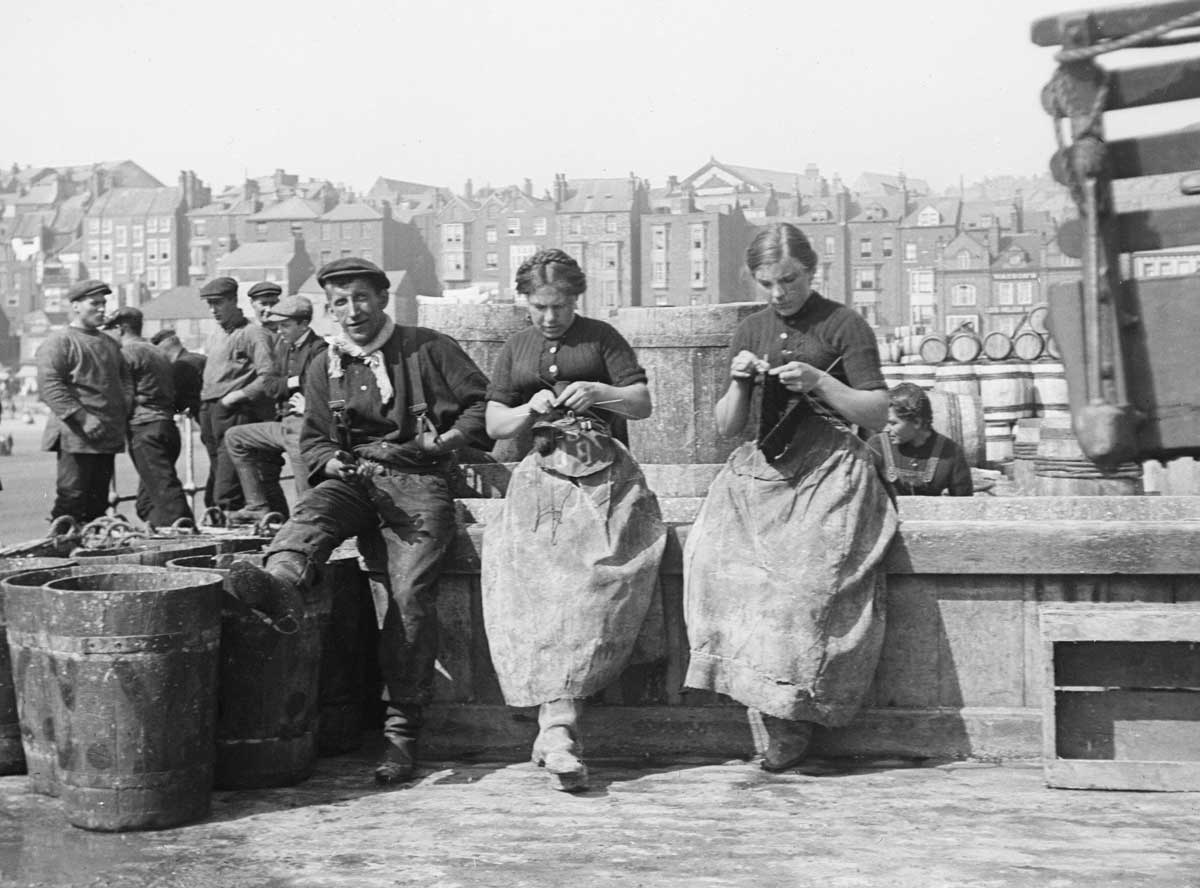Unravelling the History of Wool
The lore and history of knitting in the British Isles.

In this historical travelogue, Esther Rutter follows a tradition established by the first historian of the fisherman’s Guernsey, Gladys Thompson. In Patterns for Guernseys, Jerseys & Arans (1955), the otherwise patrician Thompson spent an afternoon working as a toilet attendant in Filey on the North Yorkshire coast, an occupation that meant she could interview expert Guernsey knitters. Thompson would try to memorise the jumper motifs as fishermen walked by, noting:
If a section is memorised, the rest can be worked out on an old envelope round the corner – often the man wanders away before you have taken it all in, then he has to be chased down the sea-wall, or harbour, to verify and make certain the pattern is correct.
Rutter, too, has gone into the wild in search of Britain’s knitting history. Disenchanted with her office job, she decides to ‘knit my way across the British Isles’. On a 12-month odyssey, she works on various projects inspired by her travels, discovering lost or barely salvageable knitting traditions. Among her projects is a two-colour Dales glove, which were once hand-knitted in Yorkshire and Westmorland in the hundreds of thousands. Less than a dozen of these Fair Isle-style (knitting with two colours per row) gloves remain. Rutter produces a fisherman’s Guernsey for her father, an item of clothing which, by 1850, had developed into an art form reflecting the heritage of both coastal and inland mariners with complex, symbolic motifs. Monmouth caps, a simple, woollen hat knitted in thick yarn on large needles, were first produced in Monmouth in the 16th century. Made and worn well into the 19th century, they represent one of the oldest traditions in British knitting history. Rutter deftly unpicks wool’s history by following certain clues (‘clue’ is appropriate – it is an old word for a ball of yarn).
Histories of knitting have been written before – Richard Rutt’s A History of Hand Knitting (1987) is perhaps the definitive title – but rarely have they been so engaging, or geographically comprehensive. Rutter travels in Scotland, Wales, England and the Channel Islands. The degree to which different regions’ knitting traditions vary has possibly been overstated in the past. Guernsey motifs, for example, once thought to belong to certain fishing villages or counties, have since been found spread widely across Scotland and England. Yet there are constellations of patterns found commonly in certain places. Patterns were an oral tradition and in fishing communities appear to have moved around the coast as the ‘gutter girls’ (women who gutted herrings for a living) migrated between different towns.
One highlight of Rutter’s journey is Shetland Wool Week. An annual event held in September, it sees knitters from across the world make a pilgrimage to the islands. Shetland Wool Brokers still sell yarn made from wool raised on the islands, dyed in traditional colours and spun there. For ten days, Rutter lives in Betty Mouat’s böd – a building which once housed active fishermen – heated by a peat stove. There, she learns to dye with madder and sketches geometric designs in her notebook, inspired by the island’s knitting.
Traditional knitting is often told as a story of motifs with names like ropes, steps, Humber stars and nets. In This Golden Fleece, history and lore are interwoven to reveal how wool is stitched into Britain’s DNA.
This Golden Fleece: A Journey Through Britain’s Knitted History
Esther Rutter
Granta 340pp £16.99
Penelope Hemingway is a textile historian. Her book, Their Darkest Materials, will be published in January 2020.